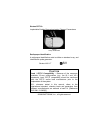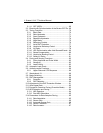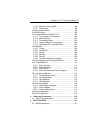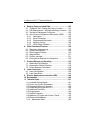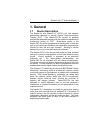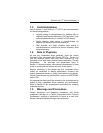
Stratos LV/LV-T Technical Manual 1
1. General
1.1 Device Description
The Stratos LV and Stratos LV-T CRT-Ps are rate adaptive
pacemakers designed to provide Cardiac Resynchronization
Therapy (CRT). The Stratos CRT-Ps provide all standard
bradycardia pacemaker therapy with the additional capabilities of
biventricular pacing for CRT. Biventricular pacing in the
Stratos CRT-Ps can be programmed to initially pace in either the
right or left ventricular chambers with separately programmable
outputs for both left and right channels. Sensing of cardiac
signals only occurs in the right ventricular chamber.
The Stratos CRT-Ps can also provide single and dual chamber
pacing in a variety of rate-adaptive and non-rate adaptive pacing
modes. Pacing capability is supported by an extensive
diagnostic set. For motion-based rate-adaptation, the
Stratos CRT-Ps are equipped with an internal accelerometer.
This sensor produces an electric signal during physical activity of
the patient. If a rate-adaptive (R) mode is programmed, then the
accelerometer sensor signal controls the stimulation rate.
The Stratos LV-T additionally also employs BIOTRONIK’s Home
Monitoring™ technology, which is an automatic, wireless, remote
monitoring system for management of patients with implantable
devices. With Home Monitoring, physicians can review data
about the patient’s cardiac status and CRT-P’s functionality
between regular follow-up visits, allowing the physician to
optimize the therapy process. Stratos CRT-Ps are also
designed to collect diagnostic data to aid the physician’s
assessment of a patient’s condition and the performance of the
implanted device.
The bipolar IS-1 connections are used for pacing and sensing
(right atrial and ventricle) and the additional IS-1 connection is
used for pacing in the left ventricle in either a bipolar or unipolar
configuration depending on the left ventricular lead. The pulse
amplitude and pulse width of each of the three channels is
separately programmable.




